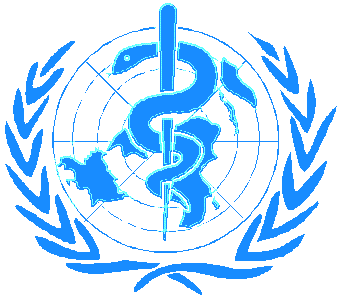 
|
AIR AND
HEALTH
Air pollutants and global effects
|
While most pollution can be said to be of
"local" - or national - origin, requiring local
solutions, air pollution can also be a transboundary problem
requiring agreement by governments world-wide or regionally on
measures to deal with it. Three issues, all of which have
implications for the health and well-being of people in every
country, have resulted in such cooperation. These are described
briefly below and in more detail in WHO pamphlet
 Climate Change
Climate Change
Also described as global warming or the
greenhouse effect, most scientists now agree that the climate is
warming up - the expert Inter-Governmental Panel on Climate Change (IPCC) has predicted a possible rise in the average global
temperature of 1 degree Celsius by 2025 and 3 degrees Celsius
before the end of the 21st century.
As well as nitrogen and oxygen, the
atmosphere also contains small amounts of water vapour, carbon
dioxide, methane, nitrous oxide and ozone; these are sometimes
referred to as "greenhouse gases" as they keep the
earth's surface about 30 degrees C warmer than it would otherwise
be.
In the last few hundred years the rising
human population and industrialisation have increased the levels
of these gases in the atmosphere. Water vapour is an important
greenhouse gas, but its concentration is determined by the
weather so is beyond our control. Carbon dioxide is increasing
due to the burning of coal, gas and oil (fossil fuels) and the
destruction of forests. Methane (CH4) is generated
through modern agricultural practices ranging from rice growing
to livestock farming, as well as emissions from coal mining,
natural gas production and distribution, refuse and sewage
disposal.
There are still uncertainties about the
effects on the climate of increasing concentrations of greenhouse
gases and indeed the extent and rate at which the climate is
changing.
Despite these uncertainties governments
worldwide have agreed that precautions need to be taken now.
Table 8 shows both the huge differences in the amount of CO2
emitted in different countries of the European Union as well as
the different trends regarding CO2 emissions. Climate change is
likely to affect human health through the shifts in the
distribution of diseases, such as malaria and respiratory
disorders (IPPC,
1995).
Local authorities can also help to reduce
emissions of greenhouse gases by, for example:
- reducing fossil fuel emissions of
carbon dioxide through energy conservation and energy
efficiency programmes;
- stopping the destruction of forests;
planting trees to reabsorb carbon dioxide from the
atmosphere;
- encouraging the use of timber from
sustainable managed sources for building, rather than
energy intensive materials such as steel, bricks and
cement;
- encouraging the reduction in use, and
where possible elimination, of products containing CFCs -
(see B2 below);
- reducing transport emissions.
| CO2
emissions in the EU |
| Country |
Millions
tons
in 1990 |
Millions
tons
in 1993 |
Variation |
Tons
per inh
in 1993 |
| Belgium |
110.7 |
109.1 |
- 1.4 |
10.8 |
| Denmark |
52.2 |
57.8 |
+ 10.7 |
11.1 |
| Germany |
993.3 |
916.1 |
- 7.7 |
11.3 |
| Greece |
73.3 |
72.7 |
- 0.8 |
7.0 |
| Spain |
209.4 |
223.5 |
+ 6.7 |
5.7 |
| France |
367.4 |
356.0 |
- 3.1 |
6.2 |
| Ireland |
30.6 |
29.9 |
- 2.3 |
8.4 |
| Italy |
401.6 |
390.6 |
- 2.7 |
6.8 |
| Luxembourg |
12.2 |
12.7 |
+ 4.1 |
31.9 |
| Netherland |
156.7 |
160.3 |
+ 2.3 |
10.5 |
| Portugal |
39.8 |
44.4 |
+ 11.6 |
4.5 |
| United
Kingdom |
578.8 |
556.2 |
- 3.9 |
9.6 |
| Source:
EEA |
 Depletion of the Ozone Layer
Depletion of the Ozone Layer
Current
Controls under the Montreal Protocol and subsequent
amendments
|
- Chlorofluorocarbons:
based on 1986 consumption levels, 75% reduction
by 1 January 1994; phase out by 1 January 1996.
Less developed countries phase out by 2010.
- Halons: based
on 1986 levels, phase out by 1 January 1994; less
developed countries phase out by 2010.
- Carbon
Tetrachloride: Based on 1989 levels, 85%
reduction by 1 January 1994; phase out by 1
January 1996.
- 1,1,1-trichloroethane:
based on 1989 levels, 50% reduction by 1 January
1994; phase out by 1 January 1996.
- Methyl Bromide: for
developed countries, freeze on production and
consumption at 1991 levels from 1 January 1995;
25% reduction by 2001, followed by 50% reduction
by 2005 and phase out by 2010, subject to
exemption for critical agricultural uses. Less
developed countries are to freeze production and
consumption of methyl bromide in 2002, with the
scope for further controls being discussed in
1997.
- Hydrochlorofluorocarbons:
developed countries, freeze at 2.8% of CFC and
HCFC consumption in 1989 from 1 January 1996
levels; 35% reduction by 2004; 65% by 2007; 90%
by 2010; 99.5% by 2013; phase out by 2020,
subject to limited exemptions for existing
equipment. Less developed countries are to freeze
their consumption of HCFCs in 2016 and phase them
out entirely by 2040.
- Hydrobromofluorocarbons:
phase out from 1 January 1996.
|
Concern over depletion of the stratospheric
ozone layer - which helps to filter out some of the sun's harmful
rays - was first raised in the 1970s. Exposure to these rays
(ultraviolet radiation) increases the risk of skin cancer and eye
cataracts, can depress the human immune system, and harm aquatic
systems and crops. Scientists now reckon that over the last ten
years or so average global ozone concentrations have decreased by
3%.
Current efforts to reduce production and
use of chemicals affecting the ozone layer will however not have
an immediate effect in restoring the ozone layer; in fact damage
is expected to go on getting worse until 2000; it should then
begin to improve so long as individual countries adhere to the
timetables in the Montreal Protocol and EU Regulations.
Many manufacturers now use alternatives to
CFCs and wherever possible local authorities should consider
using products that do not contain ozone depleting chemicals.
Consumers should also be encouraged to switch to CFC-free
products. As refrigerators which do not contain CFCs become
available, local authorities should encourage consumers to
dispose of their old unit safely, perhaps by having it removed by
the manufacturer or retailer as CFCs can be recycled.
 Acid Rain Acid Rain
The term "acid rain" was
used as long ago as 1858 to mean rain made more acidic by
acid gas pollution. A more accurate term is acid
deposition. Wet deposition occurs when pollutants are
carried in rain, snow, mist and low cloud; pollutants may
be wet-deposited after being carried long distances. Dry
deposition is the direct fallout of acid pollutants and
mostly occurs close to the source of emission.
|
 |
In the late 1960s and early 1970s,
Scandinavian rivers and lakes and their aquatic life began to
show signs of being adversely affected by pollution, and in the
late 1970s trees in Central European forests showed signs of
being similarly affected. Investigations suggested the causes to
be acidification of the ground and the water from atmospheric
depositions of sulphur dioxide and nitrogen oxides - from mainly
industrial sources - carried in the air over long distances.
The Convention on the Long Range Transport of Air Pollution was
adopted in 1979. The Convention covers Europe and North America
and calls on countries to "endeavour to limit and, as far as
possible, gradually reduce and prevent air pollution, including
long range transboundary air pollution". The protocols under
the Convention aim to reduce emissions of pollutants which can
result in acid deposition and ground level ozone formation.
Since most acid pollution comes from
burning fossil fuels, local authorities can help to reduce national
emissions by reducing the overall
demand for energy, by encouraging energy conservation and by
improving the efficiency of electricity generation.



Document Actions
Share with others